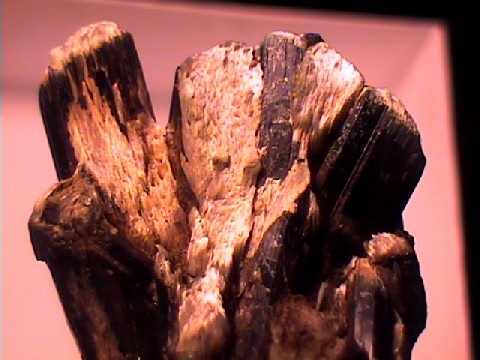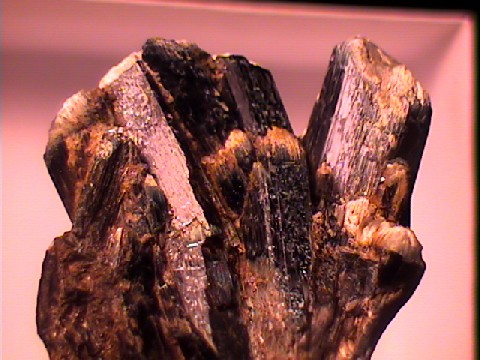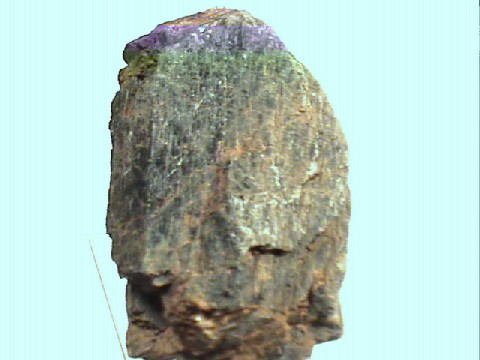 THE MINERAL HORNBLENDE
THE MINERAL HORNBLENDE
- Chemistry: Ca2(Mg, Fe, Al)5 (Al, Si)8O22(OH)2, Calcium Magnesium Iron Aluminum Silicate Hydroxide.
- Class: Silicates
- Subclass: Inosilicates
- Group: Amphibole
- Uses: Only as mineral specimens
Specimens
Hornblende is actually the name given to a series of minerals that are rather difficult to distinguish by ordinary means. The iron, magnesium and aluminum ions can freely substitute for each other and form what have been distinguished as seperate minerals. The minerals are given the names Magnesio-hornblende, Ferrohornblende, Alumino-ferro-hornblende and Alumino-magnesio-hornblende. These minerals are obviously named for their chemistries although there is little to distinguish them in the field. The iron rich members of the series are a darker black and less likely to be translucent.
Hornblende is not often a collection mineral because good crystals are somewhat difficult to find even though the mineral is widespread. It is almost always opaque and black and not very attractive. However a few specimens are extraordinary and make for valuable specimens. Some crystals can grow to a fairly large size of several feet long and nearly a foot across. Other specimens of hornblende can be acicular clusters or needle thin crystal aggregates. Many times a specimen of a more valuable mineral will be accented by the opaque black crystals of hornblende.
PHYSICAL CHARACTERISTICS:
- Color is almost always black to dark green.
- Luster is vitreous to dull.
- Transparency: Crystals are generally opaque but thin crystals or exceptional specimens can be translucent.
- Crystal System is Monoclinic; 2/m
- Crystal Habits include short stocky prismatic crystals as well as long thin crystal forms. Crystals can have a hexagonal cross-section although rarely symmetrical. The typical termination, if seen, appears as the two faces of a dome but is actually two of the four faces of a prism. Also found granular, massive and occassionally acicular aggregates.
- Cleavage is imperfect in two directions at 56 and 124 degrees.
- Fracture is uneven.
- Hardness is 5 - 6.
- Specific Gravity is approximately 2.9 - 3.4 (somewhat above average for translucent minerals)
- Streak is brown to gray.
- Other Characteristics: pleochroic in translucent speciments. Large crystals have an almost striated or grainy appearance.
- Associated Minerals are quartz, feldspars, augite, magnetite, micas and many medium grade metamorphic minerals.
- Notable Occurrences are numerous and include Bancroft, Ontario; Norway; Bohemia; Mt. Vesuvius, Italy and New York, USA.
- Best Field Indicators are crystal habit (especially cross-section), color and cleavage.





